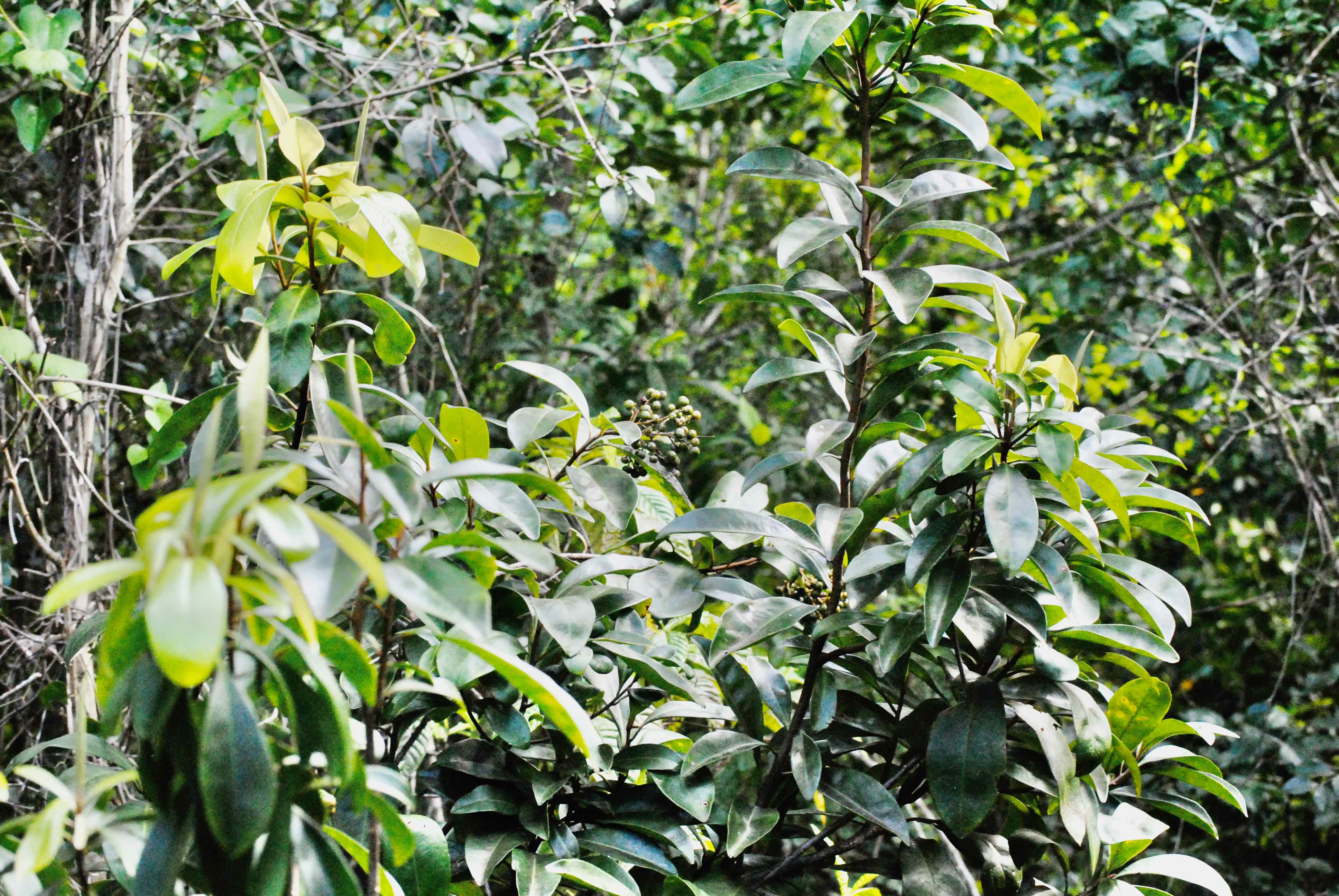
Marlberry, photographed at Fern Forest Nature Center, Coconut Creek, Broward County, in March 2014.
The Institute for Regional Conservation calls marlberry, Ardisia escallonioides, "one of our more attractive native shrubs when in bloom. One of the best shrubs for the garden." We'd go a step further: Marlberry is pretty darn attractive — even when not in bloom.
The flowers, while pretty enough, are small. However, marlberry doesn't put out a flower or two or three. It puts out clusters of them. Huge, dense clusters. Enough to wake up the surrounding woods. And while fall tends to be the peak season, they will bloom at intervals throughout the year. Marlberry has long, glossy leaves that remain on the plant year round. The bark is grayish-white, and adds to marlberry's good looks.
Whether marlberry is a shrub or a tree, or both, is a matter of opinion. It's short as trees go, reaching 20 feet max but usually 12 to 15, its width half the height. Typically it has multiple trunks that are a few inches in diameter at most.
The flowers produce small, deep purple berries that are food for birds and other animals. Marlberry also provides cover for birds.
Those berries are edible, but according to Eat the Weeds, you've got to be borderline desperate to eat them. They just don't taste very good.
Marlberry is a Florida native, actually found only in Florida among the 50 states. Its range includes Central and South Florida. It's also found in the Caribbean, Mexico and Central America.
Habitat includes coastal ridges and hammocks, and in thickets, usually with cabbage palms and stoppers, and other understory plants like beautyberry and wild coffee. It likes moist soil, but it can tolerate some drought.
As you might expect, marlberry is cultivated and sold commercially for use in landscapes as a screen or and as a accent tree or shrub. That marlberry is fairly hurricane resistant adds to its desirability. It can be grown from seed, but it can take as long as six months for the seeds to germinate.
The Seminoles used marlberry wood to make arrows, as skewers to roast meats and ate the berries for food. They also used the leaves as an "extender" for their smoking tobacco, according to Eat the Weeds.
Other common names include island marlberry and marbleberry. It is a member of Myrsinaceae, or the colicwood family. Note: The U.S. Department of Agriculture on its PLANTS database page spells Marlberry's scientific name Ardesia Escallonoides — one i only.
Fern Forest Nature Center



